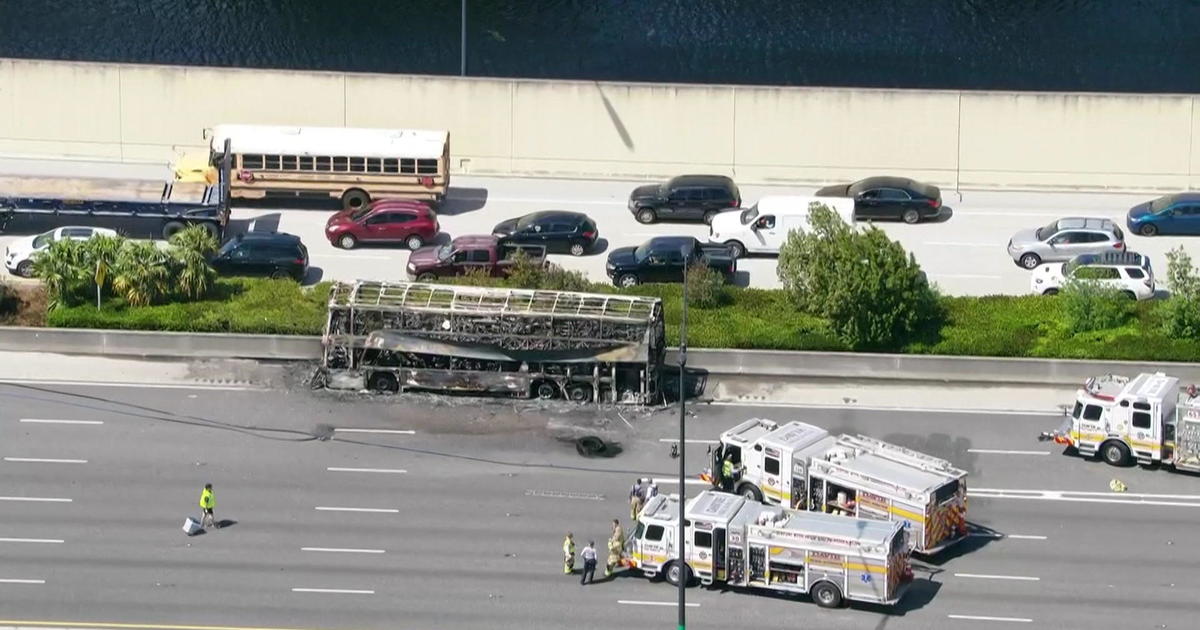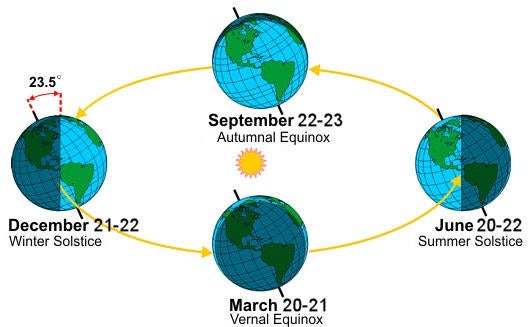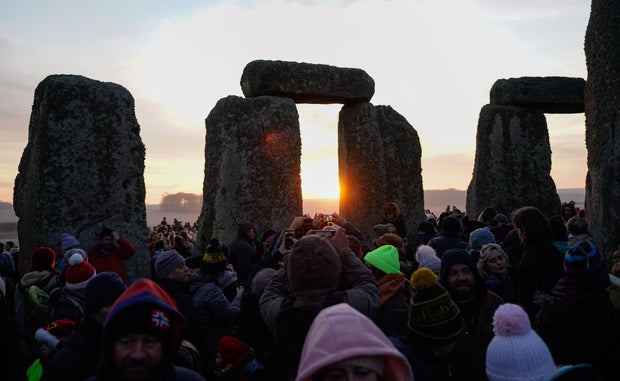CBS News
50 walk away from burning double-decker bus on I-595 in Davie

MIAMI – About 50 people are lucky to be alive Friday afternoon after the double-decker bus they were in caught fire, shutting down the westbound lanes of I-595 in Davie.
It happened before 3 p.m. near Nob Hill Road.
CBS News Miami’s Nikiya Carrero interviewed two of the tourists who say they were headed to the Everglades, but they never made it.
Edward McElduff, visiting from the UK, said “It was one of the most terrifying experiences of my life. I started thinking about my fiancé and my wedding that I got coming up. Sort of started accepting defeat.”
McElduff, along with his colleagues, decided to take a break from the World Finance Forum and take a trip to see alligators when the unimaginable happened.
Lewis Chandler, also visiting from the UK, said “It’s just one of those things that would never happen or ever happen to you and then all of sudden you find yourself running off a bus on the freeway.”
The group got on the bus at 305 Lincoln Road on South Beach where Miami Tours is located.
About 40 minutes into the drive, they noticed smoke.
“Then, about 10 minutes later, we noticed we were being pulled over on the freeway. And it was at that moment we noticed something more serious was going on.”
The group said the driver did not give them any instructions, so they took matters into their own hands.
Calmly, exiting one by one, but the door on the bus was against the guard on the shoulder.
“We had been pulled over so far that you had to climb over the shoulder to get out of the door,” said Chandler.
Both men said they were two unsung heroes who assisted the entire group.
No injuries were reported.
Images from Chopper 4 showed a charred skeleton of a chartered bus on the emergency lane of an empty highway.
It is not clear what may have started the fire.
The bus was eventually towed away from the scene, as lanes started to reopen.
Traffic was affected for miles.
CBS News
12/20: CBS Evening News – CBS News

Watch CBS News
Be the first to know
Get browser notifications for breaking news, live events, and exclusive reporting.
CBS News
Saturday is the winter solstice and 2024’s shortest day. Here’s what to know about the official start of winter.

The 2024 winter solstice, the shortest day of the year, happens on Saturday, Dec. 21, in the Northern Hemisphere. The celestial event signifies the first day of winter, astronomically.
What is the winter solstice?
The winter solstice is the day each year that has the shortest period of daylight between sunrise and sunset, and therefore the longest night. It happens when the sun is directly above the Tropic of Capricorn, a line of latitude that circles the globe south of the equator, the National Weather Service explains.
The farther north you are, the shorter the day will be, and in the Arctic Circle, the sun won’t rise at all.
How is the day of the winter solstice determined?
The winter solstice occurs because of the Earth’s tilt as it rotates around the sun.
When the Northern Hemisphere tilts away from the sun, the nights last longer. The longest night happens on the solstice because the hemisphere is in its furthest position from the sun. That occurs each year on Dec. 21 or 22.
This year, it falls on Dec. 21 at 4:21 a.m ET, to be precise.
On the summer solstice, when the northern tilt is closest to the sun, we have the longest day, usually June 20 or 21.
National Weather Service
The solstices are not always exactly on the 21st every year because the earth’s rotation around the sun is 365.25 days, instead of 365 even.
Will days start getting longer after the winter solstice?
Yes. Each day after the solstice, we get one minute more of sunlight. It doesn’t sound like much, but after just two months, or around 60 days, we’ll be seeing about an hour more of sunlight.
When will winter officially be over in 2025?
The meteorological winter ends on March 20, 2025. Then, spring will last until June 20, when the summer solstice arrives.
How is the winter solstice celebrated around the world?
Nations and cultures around the world have celebrated the solstice since ancient times with varying rituals and traditions. The influence of those solstice traditions can still be seen in our celebrations of holidays like Christmas and Hanukkah, Britannica notes.
The ancient Roman Saturnalia festival celebrated the end of the planting season and has close ties with modern-day Christmas. It honored Saturn, the god of harvest and farming. The multiple-day affair had lots of food, games and celebrations. Presents were given to children and the poor, and slaves were allowed to stop working.
Gatherings are held every year at Stonehenge, a monumental circle of massive stones in England that dates back about 5,000 years. The origins of Stonehenge are shrouded in mystery, but it was built to align with the sun on solstice days.
Andrew Matthews/PA Images via Getty Images
The Hopi, a Native American tribe in the northern Arizona area, celebrate the winter solstice with dancing, purification and sometimes gift-giving. A sacred ritual known as the Soyal Ceremony marks the annual milestone.
In Peru, people honor the return of the sun god on the winter solstice. The ancient tradition would be to hold sacrificial ceremonies, but today, people hold mock sacrifices to celebrate. Because Peru is in the Southern Hemisphere, their winter solstice happens in June, when the Northern Hemisphere is marking its summer solstice.
Scandinavia celebrates St. Lucia’s Day, a festival of lights.
The “arrival of winter,” or Dong Zhi, is a Chinese festival where family gathers to celebrate the year so far. Traditional foods include tang yuan, sweet rice balls with a black sesame filling. It’s believed to have its origins in post-harvest celebrations.
Researchers stationed in in Antarctica even have their own traditions, which may include an icy plunge into the polar waters. They celebrate “midwinter” with festive meals, movies and sometimes homemade gifts.
CBS News
12/20: CBS News Weekender – CBS News

Watch CBS News
Be the first to know
Get browser notifications for breaking news, live events, and exclusive reporting.










